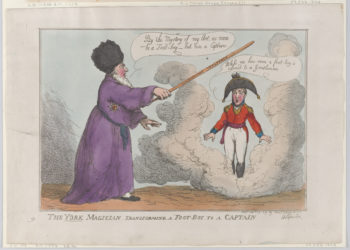Over the past few months we’ve seen increased attention to consortial efforts to reach transformative agreements with publishers. Some recent successes include DEAL/Germany with Wiley, University of California with Cambridge University Press, Springer Nature with Jisc/UK, and Elsevier with UNIT/Norway. It is clear that many library consortia are prioritizing open access publishing in their publisher contracts, which they have stated clearly must be cost neutral or at least cost controlling overall.
Underneath the importance of cost control in the aggregate lies an extremely important question — how is the cost of a transformative agreement distributed within a library consortium among its members? I observe today that cost share distribution within consortia is a substantial risk to the ability of transformative agreements to take hold for the long term and may threaten the cohesion of consortia as well.

The question of how cost share is calculated within a consortium is not a new one. Cost share for subscription contracts is a regular topic of conversation and sometimes tension within consortia, and these internal discussions sometimes take the form of contentious debate. Many consortia rely on a cost share model based on institutional FTE, but considerations of historic spending, overall library budget/size, the availability of central funding if any, and other factors can come into consideration. Also relevant is whether a given contract is mandatory in the sense that all consortia members must contribute vs. those that are optional in the sense that the consortia negotiates the terms but then each institution decides whether to participate. These are sometimes also termed “all-in” vs “opt-in” for consortia members.
Cost share matters for transformative agreements because the basic value proposition in a transformative agreement shifts from access/reading usage to article authorship. Because of this, the value that a given institution receives from an agreement can increase for some institutions within a consortium and decrease for others. As a result, the “fair share” that a given institution might be willing to pay is affected.
Now, interestingly — as far as I can tell — the general approach to the question of cost share for transformative agreements has been to set it aside. Consortia appear to be continuing with whatever cost share approach each has historically used for subscription agreements even as they flip these subscription agreements to transformative (subscription and publication) agreements. As Norway’s Nina Karlstrøm (License Agreements and Open Access at UNIT) explained to me, “since this is a pilot for two years, the institutions decided to keep the existing model for paying.”
In part, this approach of sticking with historic cost share models seems to be in recognition that the data upon which one might calculate a “transformative cost share model” are not available. Few publishers have the infrastructure in place that would be needed to track systematically or report on author affiliation. Institutions do not have infrastructure to automatically audit and confirm author claims of affiliation. Though these infrastructures are in development (e.g., as a component of the Wiley/DEAL agreement), developing new cost share models right now would be dependent on retrospective data collection and analysis. Such data collection and analysis would be a daunting task even for the most well-staffed consortia.
In fairness, this approach of continuing with past cost share models is also not unreasonable given that, even for a “Read Library” in a “Read Consoritum” (to adopt the terminology Gwen Evans coined in her Scholarly Kitchen piece last week), the pricing for a transformative agreement based on historic cost share is likely still a better deal than going it alone for a subscription contract at this time. As Liam Earney, Jisc’s Director of Licensing, put it: “at the moment, institutions understand it’s a transition and it is still a good agreement.” Each “Read Library” get access to what it wants for reading, which it would otherwise license independently, and there is a “degree of reciprocity” in the community.
I have to wonder though if this is likely to continue to be the case over time. We saw consortia willing to base their subscription cost share on historical print spend for quite some time, but as relative changes in institutional size and research intensity compounded over time, cost share models were adjusted or consortia weakened. Today, the key value metric to monitor for change is on the publisher side, as a given publisher’s portfolio of content shifts to greater and greater percentages of open content. Will a “Read Library” be willing to continue to subvent a “Publish Library” as an increasing portion of what is being paid for is publishing and not reading?
At its extreme, one asks, why pay for reading when reading is free? A “Read Library” will reasonably begin to question its cost share allocation as open content grows. A “Publish Library” will reasonably be concerned that a shift in cost share based publishing would make it responsible for a greater percentage of cost. The “Publish Library” would find itself needing to pay more in a “transformative cost share model” but with little mechanism for increasing the funds it has available.
In the case of an “opt-in” transformative agreement, a “Publish Library” would have the option of withdrawing from the consortial agreement, though that would be fraught on a number of fronts, particularly if the institution’s faculty have come to rely on the transformative agreement for publishing open access (and even more so if they have come to do so under an open access publishing mandate). In the case of an “all-in” transformative agreement, this would be even more complicated.
For a specific example of how a “transformative cost share model” could raise cost share significantly, we can take the case of UCLA. I calculated a back-of-the-envelope estimate of how cost share would shift in the move from an FTE-based subscription model to a journal-article based publishing model in the University of California system, using the FTE data on the CDL website and author affiliation searches in Scopus, along with the assumption that overall cost of an agreement remains the same. This estimate made clear the extent to which a “transformative cost share model” would raise cost share for UCLA. I reached out to Ginny Steel, UCLA University Librarian, and learned that the question of which institutions will eventually pay how much under transformative agreements has also been on her mind. She observed that it would be a financial challenge if there was a significant increase in UCLA’s cost share, particularly as state allocations to library budgets are not based on publishing volume.
The question is not only if there is enough money in the system to pay for open access publishing but if it is held by the right players.
If the cost share shifts without state funding allocations shifting in parallel, high publishing institutions may not have sufficient resources to fund publishing activity even if the overall cost of the transformative agreement is equal to the subscription agreement. The question is not only if there is enough money in the system to pay for open access publishing but if it is held by the right players.
Perhaps anticipating these future tensions, consortia are preparing to consider shifts in their cost share models. Karlstrøm shared that “the data gathered during the period of the agreement will be used to evaluate a new payment model reflecting publishing activity.” Steel will be keeping a watchful eye on how UC’s model might evolve and the implications for her institution’s cost share. As Earney characterized it, cost share allocation is “the critical question” for the future of transformative agreements. Personally, I tend to agree.
Discussion
17 Thoughts on "Will Transformative Agreements Unravel Library Consortia?"
Great article. The article illustrates that money matters and as Mark Twain said: You pays your money and you takes your choice.
As Mark Twain would have said–let the old and powerful pay for the benefit of the young and underrepresented. One day these young and underrepresented will be in the shoes to pay.
Right now the old and powerful are continuing to pay for themselves…
As I understand it, transformative agreements are a bridge to an all open access world. They are not meant to be the new end state. So the reality is that research institutions and funders will end up with the heaviest burden. How much of this ends up coming from existing library budgets and how much comes from grants is an open question. To me this means that the key issue will who manages the publishing functions and how much do they get paid for doing it. Framed this way, it seems to me that publishers will need to be more efficient (and cheaper) than they now are or constrained costs will be imposed by funders and institutions as has been the case with Plan S. The advantages of open science are clear and increasingly understood this is the end state we should figure out how to efficiently fund and not worry to much about the transistion.
“The advantages of open science are clear”: open science and open access are not the same thing.
And further, open access does not automatically mean author-pays Gold open access (a model designed to concentrate all of the costs on a small number of research producers).
Let’s talk about the integrity of science. Having open access to that research helps it become open science because more researchers are likely exposed to that research and more likely to reproduce the science. And if they reproduce that research in an open way, then it is more likely to become reproducible again. So, open access > open science, but open science > open access. It’s a cycle that builds and then loops.
Oh, I don’t think any of that is true, Scott. It’s a nice idea, but it has not been demonstrated. And of course it overlooks the even bigger problem of what researchers are going to do with all that mass of information coming at them. On the other hand you could just outsource the academy to Google, which is what OA ultimately does. At bottom, the problem is that we don’t live in a world of abundance. We–people–are the limiting factor, and our attention is finite. Traditional publishing is an act of wrestling with the finite, in the form of acknowledged brands and economic constraints. We will miss it when it is gone and we are all swimming in a pool of our own abundance.
When anyone questions transformative agreements, the standard answer seems to be that they are not an end state. However, until we know what that end state might be, we can have no idea whether it in fact will come to exist — or whether this direction really is strategically wise at all. What we know now, because of Lisa’s analysis here (and mine about the open access “royalty” https://scholarlykitchen.sspnet.org/2018/09/04/read-publish-good-academy/ ) is that there are meaningful questions about transformative agreements that their advocates should be asked to answer. I hope we will hear more about what to expect “after transformative agreements”….
I think it is very problematic to suggest that we need not worry because somehow this “end state” is disconnected from the transition. The “end state” may not only be effected by the transition — it may be determined by it.
I think it also quite premature to give Plan S any credit for constraining costs. Credit for wanting to — sure! But actually doing so?
Good article, Lisa. I’m not sure how relevant centralized European consortia cost sharing will end up being to decentralized US consortia agreements. More likely, a US consortia version will be some kind of volume discount. If an individual library transformative proposal has a $3,000 APC, perhaps the consortia will get a $2,800 APC if X number of libraries take part. Low-publishing libraries/universities subsidizing high-publishing libraries/universities in decentralized US consortia, I’m guessing, will not be the norm.
The issue of read institutions (private and public) becoming eventual free-riders is an issue with all of the open models I’ve seen discussed. Whether it is ultimately successful or not remains to be seen, but I am appreciating more and more how the Subscribe to Open approach tries to keep the read spend in the system from the start.
I certainly am very interested to see if the theory of the Subscribe to Open approach will play out in practice. As to US models, it will be interesting to see what develops – will it be volume discounting but still paid per article or will it be transformative agreements?
Transformative agreements can have some type of volume discount. For opt-in, decentralized consortia, better terms, in one way or another, are being offered based on how many libraries participate in the transformative agreement.
Agreed — though, at the same time, I think we may be pushing here against whether a transformative agreement is any contract that includes open access publishing or only those contracts that specifically “seeks to shift the contracted payment from a library or group of libraries to a publisher away from subscription-based reading and towards open access publishing” (https://scholarlykitchen.sspnet.org/2019/04/23/transformative-agreements/).
I’m not sure we are. Admittedly, work is still needed standardizing our terminology. So I’ll hold off quoting my own definition and just say that I don’t know of US libraries entering or investigating open access agreements that do not or would not involve a redirection and spend of some subscription dollars.
Curtis, many of these negotiations are not public. I for one know of situations where OA agreements do not involve a redirection of subscription dollars. It’s a diverse world out there.
Interesting thought. I’m curious to know how my fellow US libraries are paying for OA agreements outside of some use of their subscription budgets. I’m finding covering publishing costs within the constraints of a subscription budget can, depending on the publisher, be quite a challenge. I’d like to know where else I might look for funding.



